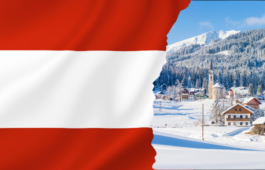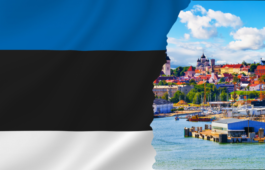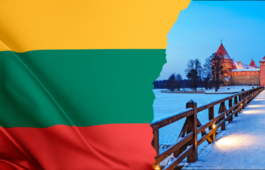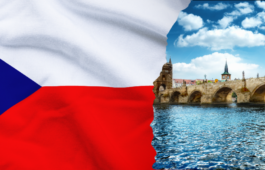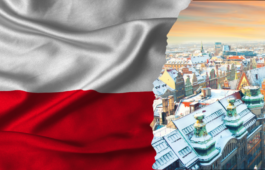- 10 January 2017
- The Migration Bureau
- No Comments
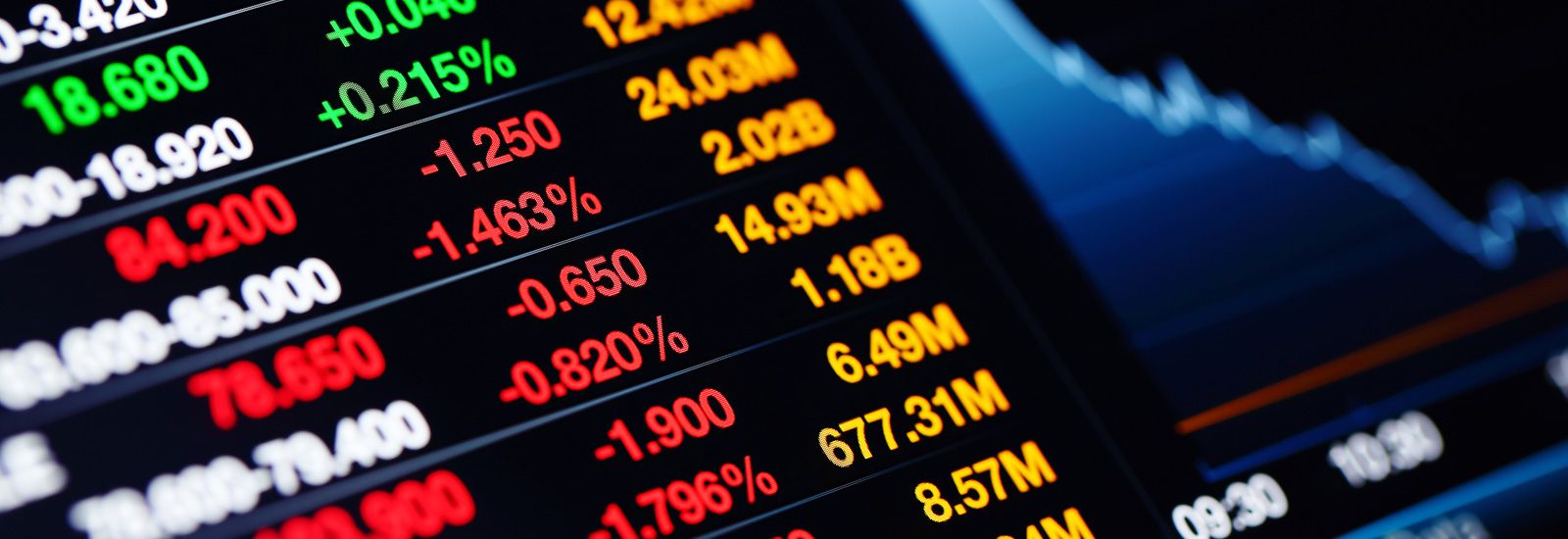
Macroeconomic Analysis of Polish Economy
Basic information
Poland, with a population of over 38.4 million inhabitants, is the largest member of the European Union among all the countries of Central and Eastern Europe. In terms of the number of inhabitants, Poland is the 35th largest country in the world and the 6th largest in the EU (CIA’s The World Factbook, the 2013 estimate). In terms of gross domestic product (GDP), Poland is the 9th biggest economy in the EU and the 25rd biggest economy in the world (2014 GDP in current prices, USD-denominated, IMF, World Economic Outlook Database, October 2015).
Demographic situation and level of social development
In 2011 Poles living in urban areas constituted 60.8% of the population, while the remaining 39.2% lived in rural areas. The urban population shrank since the previous census of 2002 by 204k persons while the rural population increased rather significantly (by 486k).At the end of 2014, there were 13.983 mln flats in Poland, which translates into an increase of some 130k apartments, or 1.0%, since the previous year, GUS writes in Poland’s Statistical Yearbook 2015.
According to GUS, over the recent years we have observed a lowering of demographic dependency ratio: in 2011 there were 57 persons at non-productive age for every 100 persons at productive age, while in 2002 the ratio was 62:100.
Source: Eurostat
http://ec.europa.eu/eurostat/tgm/graph.do?tab=graph&plugin=1&pcode=tps00001&language=en&toolbox=data
A positive phenomenon observed in the years has been a continuous increase of Poles’ educational attainment level. The percentage of Poles with education at the secondary or higher level increased from 41.4% in 2002 to 48.6% in 2011. The most rapid growth was recorded in the group of people with higher education, whose share in population aged 13+ increased from 9.9% in 2002 to over 17.0% in 2011.
By the end of 2014, 2.32 mln Poles lived abroad, meaning an increase by 124k or 5.6% in the number of emigrants versus 2013 (2.2 mln), GUS estimates. Thereof, 2.01 mln lived in Europe in 2014, up from some 1.89 mln in 2013, of which the vast majority (1.9 mln, up by 112k from 2013) lived in EU states. Polish emigrants chose as their residence abroad above all the UK (685k), Germany (614k), Ireland (113k), the Netherlands (109k) and Italy (96k).
Emigrants remain an important element of the Polish economy: according to the Polish central bank NBP, the value of emigrants’ money transfers to Poland in 2013 amounted to some PLN 16 bln (some EUR 3.92 bln), which accounted for 1.24% of the Polish GDP this year. In 2014, the value of remittances fell to PLN 11.8 bln. The declines continued in early 2015 as the Q2 level declined by 2.8% y/y to PLN 4.0 bln, show the latest data of central bank NBP on remittances from long- and short-term migrants.
Poland is perceived by the United Nations as a highly developed country (the top rank on the UN’s scale) in terms of Human Development Index (HDI), which takes into account factors such as life expectancy, the years of schooling average for 25 year olds and expected number of years of schooling of school-age children, as well as GNI per capita adjusted for purchasing-power parity. In the HDI ranking included in Human Development Report 2014 Poland was ranked 36th among 188 countries featuring on the list.
Gross domestic product
Poland’s GDP grew by 3.7% y/y in Q3 2015 versus 3.3% y/y growth in Q3 2014, GUS data showed. Domestic demand increased by 3.2% y/y. These data indicate an economic rebound after a difficult 2013 when GDP edged up by 1.6% and domestic demand shrank by 0.2%.
Źródło: GUS
In terms of economic growth in 2014, Poland ranked #5 in the EU, after Luxemburg, Ireland, Hungary and Malta the Eurostat data show. International institutions, including the OECD and the European Commission, expect the Polish economy to rise by 3.4-3.5% in 2016.
Over the recent years, observers have grown accustomed to the Polish economy’s relatively good performance against the backdrop of the region of Central and Eastern Europe as well as the entire European Union. It was particularly visible in 2009, when Polish GDP, according to Eurostat data, grew 1.6%, making Poland the only EU country with a positive economic growth and earning the country the name of the “green island”. It was also in 2010 and 2011 that Polish economy stood out among European peers: the Polish GDP growth of 3.9% in 2010 was the third highest in the EU, while the 4.5% economic growth in 2011 ranked Poland fourth among the 27 member states.
Source: International Monetary Fund
Growing faster than its environment, Poland is catching up, in terms of wealth, with Western EU countries. Poland’s GDP per capita in 1995 was 43% of the average of EU countries, in 2000 it was 48%, and in 2014 – already 68%, data from Eurostat indicate.
Inflow of European Union funds
Since Poland’s accession to the European Union in 2004 the country has come a long way. A strong support in this process has and continues to be provided by the inflow of structural funds granted in the framework of the EU’s cohesion policy. In the EU’s 2007-2013 budget, the subsidies for Poland amounted to nearly EUR 68 bln, the highest sum among the EU funding beneficiaries.
According to the Development Ministry’s data as of January 2016, since the launching of EU subsidies programs of the 2007-2013 framework, authorities and beneficiaries signed 106.526 contracts for the total sum of PLN 403.3 bln of qualified expenses, including co-funding on the part of the EU amounting to PLN 286.7 bln.
The inflow of EU funds to Poland will increase in the years 2014-2020, as the EU budget for the period, approved by the Europarliament in mid-November 2013 set the funds allocation for Poland at EUR 105.8 bln (PLN 441 bln), including EUR 72.9 bln (PLN 303.6 bln) in the Cohesion Policy framework and EUR 28.5 bln (PLN 118.8 bln) as Common Agricultural Policy payments.
Consequently, Poland will be the biggest EU funds beneficiary among all the member states – not the biggest beneficiary of the Cohesion funds alone, as it has been the case so far, but of all funds. “From our [Polish] perspective it is a very good result,” director of grants and incentives advisory services department at Ernst & Young Paweł Tynel told PAP, commenting on the result of the EU’s budgetary negotiations. “Now it is important to use the funds well. (…) By this I mean [spending on] infrastructure, as we still need money to level out infrastructural differences, but not only. The funds should also go to companies, as subsidies for their investments,” he said.
Polish internal market and labor market
Strong internal demand and solid private consumption used to be named by economists as strengths of the Polish economy, helping the country to retain its economic growth even in the face of difficult conditions on international markets.
In contrast, Poland’s retail sales showed a rather weak development in 2014 with 1.8% y/y growth, down from 2.3% y/y in 2013. But the latest figures from Eurostat showed that in November 2015, retail sales increased 5.9%.
Source: Eurostat
http://ec.europa.eu/eurostat/tgm/graph.do?tab=graph&plugin=1&pcode=tipsun30&language=en&toolbox=data
Based on the Eurostat methodology, Poland’s seasonally adjusted unemployment measured 7.0% in November 2015 versus 7.0% in October. This compares to 10.7% seasonally adjusted unemployment rate in the euro-zone in November.
Foreign direct investments inflow
According to UNCTAD data, Poland enjoyed investment capital inflow of USD 14 bln in 2014. In the year 2015 Poland should enjoy FDI inflow at the level comparable to 2014, i.e. some USD 12-15 bln, the UN FDI expert Zbigniew Zimny estimated in an interview for PAP
Poland have so far stood out in terms of foreign direct investments (FDI) among its CEE peers. According to UNCTAD’s Internet database, accessed at the beginning of May 2013, the foreign direct investments inflow to Poland between 2006 and 2011 totaled at some USD 94.9 bln and was the highest in the region (compared to the Czech Republic – some USD 36.8 bln, or Hungary – some USD 26.1 bln in the same period).
Foreign trade – exports grows faster than imports
According to the data from GUS, imports picked up the pace while exports stabilized in 2014. PLN-denominated exports in current prices were higher by 5.3% y/y and amounted to PLN 682.36 bln. Imports, in turn grew by 5.6% y/y, hitting the level of PLN 692.57 bln.
Source: GUS
Also foreign trade results in the ten months of 2015 look well. Exports in current prices amounted to PLN 616.59 bln, up by 6.7% y/y, while imports reached PLN 604.56 bln, 3.2% above the year-earlier level. Current account turned to a surplus of PLN 12.05 bln from a gap of PLN 7.9 bln a year earlier.
Source: GUS
The geographical structure of Poland’s foreign trade slightly shifted in 2014: the share of developed countries (including the EU member states) decreased y/y, while the share of developing countries as well as Central Eastern European countries increased, GUS reported. The shift might be seen as a sign that in the face of the economic slowdown in the Western European countries, Polish companies are searching for trade partners on other, more prospective markets.
Source: GUS
Germany retained its position as Poland’s leading trade partner. Poland’s western neighbor absorbed 27% of Polish exports and accounted for 22.8% of imports to Poland. Germany’s share in both categories increased by 1 pp for exports and 0.8 pp for imports.
Polish capital market – Warsaw as financial hub of CEE region
Year 2015 brought an increase in the number of listed companies on the WSE Main Market. The number of companies has increased from 471 at the end of 2014. To 487 at the end of 2015. Over the past year was 30 IPOs compared to 28 in 2014. The total value of IPOs on the WSE Main List in 2015. Amounted to 2.0 billion zł (zł 1.3 billion in 2014.). The capitalization of domestic companies on the Main Market reached zł 516.8 billion at the end of 2015.
The WSE boasts a derivatives market which holds an important position in Europe, a fast growing non-Treasury bonds market Catalyst run by a unit of the WSE, Bondspot SA, a wholesale T-bond market Treasury BondSpot Poland (TBSP) as well as an energy market.
The average daily turnover in 2015 declined by 1.7% y/y to PLN 810.6 mln, while the average daily transaction c increased – by 18.5% to 65.9k.
Value of turnover on the alternative NewConnect market surged by 41.2% y/y to PLN 1.7 bln PLN in 2015. The futures trading volume was up in December 2015, by 6.2% to 540.2k contracts.
The WSE’s significance as a financial center goes beyond the European continent – the list of institutions present in Warsaw features many global players, including Goldman Sachs, Morgan Stanley, Merrill Lynch, JP Morgan, Credit Suisse, Societe Generale, UBS, BNP Paribas and HSBC, all of which have the status of the WSE’s member.
Source – Polish Press Agency, Economic Service









